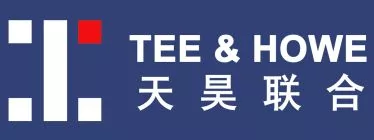- within Technology topic(s)
- with Inhouse Counsel
- with readers working within the Pharmaceuticals & BioTech industries
I have reported the Beijing IP Court decision below:
First drug patent linkage decision in China
Thanks again for the heads up from Aaron Wininger of Schwegman Lundberg & Woessner, the China Supreme Court (the Supreme Court) has decided on the appeal of this first drug patent linkage decision, which is final. However, this appeal decision could not be found at the the Supreme Court, but is available at the link below.
https://mp.weixin.qq.com/s?__biz=MzA3NTI0NzYxNw==&mid=2651566677&idx=1&sn=43f3246df99e4372f37f0db888cd43b4&chksm=848c6b3bb3fbe22d34ca9e74f9
d6960945dc1cb03d6a9239d1ce3b28b0e80b07d048726a005a&scene=90&subscene=93&sessionid=1661728732&clicktime=1661728881&enterid=1661728881#rd
If anyone has this appeal decision, which is now final in China, your sharing will be greatly appreciated.
This appeal decision also revealed some facts in the first Beijing IP Court (BJ IP Court) decision, which will also be discussed below.
From the decision of the link, which maintained the BJ IP Court decision the generic did not infringe literally or by equivalence, there are the following main points:
The first decision at the BJ IP Court
- In this first decision, specifically before the deadline to file the drug patent linkage complaint, the subject patent CN ZL2005800098777.6 ('777, for the drug under the brand Edirol) of the patentee Chugai Pharmaceutical Co., Ltd. (Chugai, a Japanese pharmaceutical company) has been announced to be invalid by the CNIPA. This invalidation decision itself is under appeal, and therefore the BJ IP Court continued with this case.
- During the invalidation process, it appeared that Chugai amended independent claim 1, the only independent claim in '777, to specify that the antioxidant in the composition is dl-a-tocopherol, and such is used as the basis in this first decision at the BJ IP Court.
- During this first decision, the generic supplier Wenzhou Haihe Pharmaceutical Industry (Haihe) declared that the antioxidant Haihe used is not dl-a-tocopherol, but one of the antioxidants "tocopherol acetate, dibutylhydroxytoluene, natural vitamin E, dl-a-tocopherol, concentrated mixed tocopherol, ascorbyl palmitate, L-ascorbyl stearate, butylhydroxyanisole, and propyl gallate" except dl-a-tocopherol recited in paragraph [0029] of the Chinese description (see paragraph [0025] of the corresponding EP1714656A1) [Note: the identity of the exact antioxidant was redacted in the link].
- Chugai then argued for infringement by equivalence, which was
refused by the BJ IP Court on the basis that Haihe's
antioxidant has been recited in the description of '777 but not
chosen by Chugai, and therefore has been surrendered by Chugai
(according to Article 5 of the Court's patent infringement
disputes explanations), although Chugai argued as below:
- Article 5 applies to claims before amendments, or at least should include claims before amendments (it is not clear what Chugai intended this "before amendments" to mean, i.e. before any amendments to the claims during prosecution, or before amendments during invalidation). The BJ IP Court decided that this cannot be the case, or otherwise there would be two claims in force ab initio.
- Article 5 should apply only when there is intention from the patentee to surrender, which the BJ IP Court decided to be irrelevant.
Appeal decision at the Supreme Court
In this appeal decision, it was revealed that the 4.2 declaration Haihe filed at the NMPA was directed only to original claim 2 of '777 as below:
- The preparation according to claim 1, wherein the antioxidant is one member selected from dl-a-tocopherol, dibutylhydroxytoluene, butylhydroxyanisole, and propyl gallate.
Haihe tried to change their 4.2 declaration at the NMPA on 9 December 2021 to direct to claims 1-7, but was refused by the NMPA.
In the appeal, Chugai requested the Supreme Court to order the following investigation reports to show that Haihe violated the NMPA's requirements when applying for their generic drug marketing approval, and to prove infringement:
- Report 1 to show that among the non-infringing antioxidant used by Haihe and dl-a-tocopherol, dl-a-tocopherol is the only one legally allowed by the NMPA, and therefore Chugai believed that Haihe replaced the non-infringing antioxidant by the infringing xn--dl--tocopher
- ol-i9j.Report 2 to show that Haihe did not declare what antioxidant was used when applying for the generic drug marketing approval. Haihe only provided such information when Chugai filed the drug patent linkage complaint the Beijing IP Court.
Based on the above, the Supreme Court ruled on the following points:
1. Correspondence between the 4.2 declaration with the patent claim
The BJ IP Court was correct to use the claims after amendments at the invalidation to rule.
The Supreme Court was unhappy with the "hide and duck" attitude of Haihe when applying for generic marking approval at the NMPA, especially only notified Chugai the antioxidant Haihe used after Chugai filed the drug patent linkage at the BJ IP Court. The Supreme Court stated that the BJ IP Court should point this out and criticize this in their decision. However, Supreme Court stated this is not part of the remedy, and therefore would not affect the final decision.
2. What antioxidant actually used by Haihe
According to the declaration submitted by Haihe to the NMPA, the antioxidant Haihe used was indeed not dl-a-tocopherol. The Supreme Court also stated that what is actually used by Haihe was not an issue this case. This case was to determine whether the drug according to Haihe's declaration to NMPA fell under the scope of Chugai's patent. It is NMPA's business to determine whether this Haihe's antioxidant is legally allowed.
Chugai's request for the two investigation reports were also denied by the Supreme Court.
3. Whether Haihe antioxidant infringed Chugai's patent by equivalence
In addition to surrender, the Supreme also ruled on this point using estoppel, albeit Chugai argued that their amendment to recite dl-a-tocopherol as the only antioxidant was due to support allegations. The Supreme Court specifically stated that Chugai did not provide any reasons or evidence showing that Chugai did not abandon the other antioxidants by amending the claims during invalidation. [Note: This is catch-22. If Chugai could do so, why would they amend to keep '777 in force?]
Toby's observations
The mechanism of the current CN drug patent linkage declaration and notification is defective, but is understandable as the system is still at its early stage. Specifically, the system should require that the generic notifies the drug patentee of the complete composition of the generic drug, including identify and amount of all ingredients, at least when filing the type 4.2 declaration.
Further, whether the generic is allowed to choose what specific claim in a drug patent to file their type 4.2 declaration is subject to debate. I find it is absurd to do so if the generic is allowed to target one dependent claim as in this case - would this be equivalent that the generic also files a type 3 declaration for the main independent claim, which in this case Haihe did not appear to do so? As such, I suggest if type 4.2 declaration is to be filed by a generic, the generic is at least required to file this 4.2 declaration directed to all of the independent claims. Dependent claims could be chosen, as the generic may not be using components/amounts specified in the dependent claims.
As always, amendments, particularly during invalidation, would have consequences. Integers recited in the description but not included in the claims after amendments would be excluded for infringement consideration easily in China.
The Chinese courts appear to rule on such cases purely from the angle of "pseud-infringement", i.e. whether the generic drug according to the generic declaration to NMPA falls within the scope of the drug patent, survived after invalidation. Say yes to bifurcation.
The content of this article is intended to provide a general guide to the subject matter. Specialist advice should be sought about your specific circumstances.


